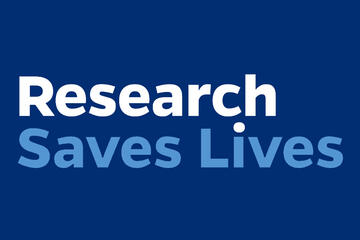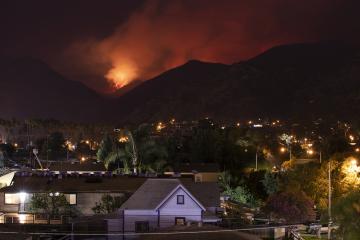As wildfires threaten densely populated areas worldwide with increasing frequency and intensity, Thomas Gernay, an associate professor in civil and systems engineering at Johns Hopkins University, is relying on funding from the National Science Foundation and National Institute of Standards and Technology to develop new designs for fire-resistant buildings and bridges.
Gernay's approaches not only make structures safer but also more economical, enabling efficient use of materials while enhancing building codes, improving structural resilience, and providing engineers with the tools they need to design safer structures overall.
"Our work sits at the intersection of fire safety and structural engineering, focusing on creating scalable solutions to make materials, structures, and even entire infrastructure systems more fire resilient," said Gernay, director of Johns Hopkins' Multi-Hazard Resilient Structures lab and a member of the Hopkins Extreme Materials Institute. "By rigorously modeling how extreme heat affects materials and developing new design approaches, we aim to transform how buildings—and even whole cities—can withstand and recover from fire events."
Gernay is the co-developer of SAFIR, a computational tool that allows researchers and designers to simulate how structures respond to fire. Today, SAFIR is used by more than 300 institutions across 43 countries, playing a key role in projects as varied as the design of the Paris 2024 Olympics Aquatic Center and forensic analyses of the 2023 I-95 Philadelphia bridge collapse caused by a tanker truck fire. Having this technology allows engineers to better predict how fire affects structures, leading to more resilient designs and enhanced public safety.
His team's research on fire design methods for building structures using cold-formed steel (CFS) is also having a profound impact on the industry. Working with the American Iron and Steel Institute, Gernay and several collaborators, including Whiting School of Engineering colleague Benjamin Schafer, identified shortcomings in current fire design approaches—as well as opportunities for the industry. This work led to a new fire appendix in the 2024 American National Standards Institute's design specifications for CFS structural members—a crucial resource for designing fire-resistant buildings.
Supported by a five-year, $649,000 National Science Foundation Early CAREER Award, Gernay is expanding on that work, refining performance-based fire design methods that will allow engineers to model fire resilience with even greater accuracy.
"The total economic loss from the 2025 Los Angeles fires is expected to be close to $250 billion. Even when fires do not occur, they are still costly due to current protection measures," Gernay said. "For every dollar invested in a steel frame structure, we may pay up to 20 cents for fire protection, like adding fire-resistant material to beams and columns, and at the scale of the nation, this fire protection amounts to tens of billions of dollars."
He said that the motivation for his group's research "is not only better designs, which can save lives, but also designs that are smarter and more efficient to reduce the economic impact of fire—delivering value for the public through better engineering."
While Gernay's NSF-funded project focuses on performance-based fire design methodologies, his interest in the economic aspects of fire safety extends to other projects as well, including one supported by the National Institute of Standards and Technology (NIST) to study the economic impact of advanced fire designs for steel-concrete buildings in the U.S. The project assesses construction costs, lifetime costs, and its effect on the speed of construction. Gernay will also analyze case studies and conduct probabilistic numerical modeling to evaluate the fire performance and damage costs for various fire scenarios.
"This study supports new approaches to fire design in building codes for more efficient use of resources in the U.S. construction industry," Gernay said, pointing out that the approach of assessing the cost and benefits of safety investments can apply to any hazard—providing a science-based method to ensure resources are achieving optimal impacts.
"Fire is an unavoidable threat, but through research, we can minimize its risks and provide greater life safety," he said. "Without support from organizations like the NSF and NIST, advancements in fire safety would be slower, leaving structures and communities more vulnerable. Science and engineering are the difference between destruction and safety. Scientific discovery is what allows us to have more resilient, performant, and affordable buildings."
Posted in Science+Technology
Tagged nsf, structural engineering, civil engineering, research funding











